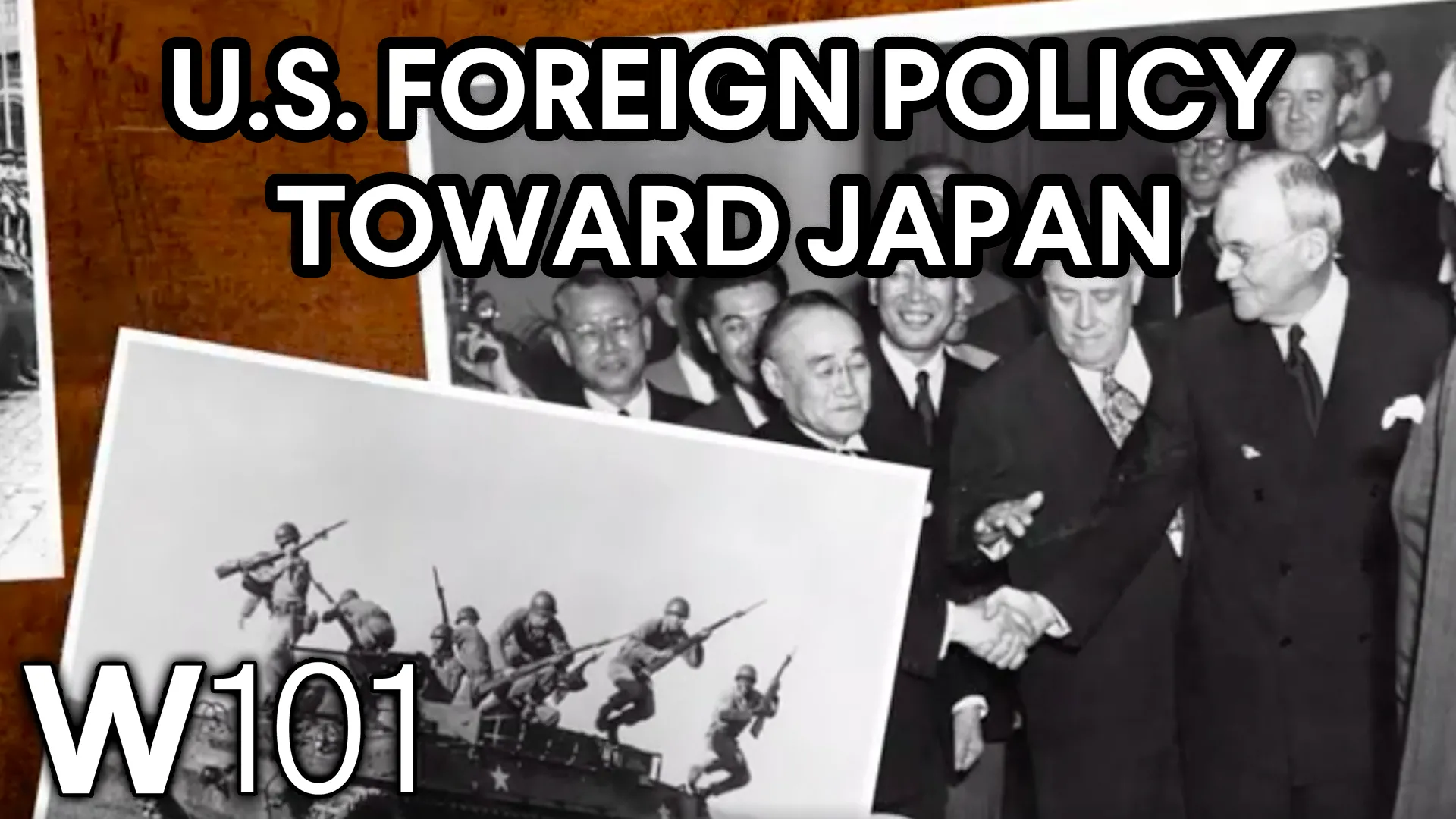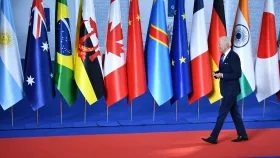How Do Countries Select Their Foreign Policy Tools?
In this educational video on foreign policy, explore how U.S. relations with Japan have changed over the past century, from Pearl Harbor to a peaceful alliance.
Teaching Resources—Tools of Foreign Policy: Introduction (including lesson plan with slides)
Higher Education Discussion Guide
Relations between countries are not set in stone: old friends can become bitter rivals, and former enemies can become close allies.
As those relationships change, so too do the foreign policy tools that countries use to interact with and influence each other.
In this video, we explore how the United States and Japan went from dropping bombs on each other to forging remarkably close political, economic, and military ties in just decades.
VIDEO TRANSCRIPT: U.S. Foreign Policy Toward Japan
Relations between countries are not set in stone. Old friends can become bitter rivals… and former enemies can become close allies. And as these relationships change, so too do the foreign policy tools that countries use to interact with and influence each other. Just take a look at how U.S. foreign policy toward Japan has dramatically shifted over the past century.
In the early 1900s, Japan and the United States were increasingly becoming rivals. The two rising powers were expanding the areas they controlled, with the United States reaching westward across the Pacific, and Japan taking over large parts of East Asia. Over time, United States leaders became concerned that continued Japanese expansion would threaten U.S. interests in the region… so the United States used its foreign policy tools to push back against Japan.
This included the United States’ push for arms control in the early 1920s. U.S. leaders, along with the European powers, convinced Japan to sign a multilateral agreement limiting the size of their navies and banning the construction of any new naval bases in the Pacific.
In the early 1930s though, U.S. leaders remained concerned and relied on diplomacy to try to discourage Japan from conquering certain parts of China—criticizing Japanese aggression and announcing that the United States would not recognize any position Japan gained through force. This was echoed by the British and other Europeans. Nevertheless, Japan continued its aggression, and the United States placed military and economic sanctions on the country, cutting off access to the Dutch East Indies, a lifeline for the Japanese, and banning the export of American oil to Japan, which was critical for the Japanese military and economy. While diplomats from both countries tried to negotiate an end to the dispute, Japanese leaders came to believe war with the United States was their best option, so they decided to strike first in December 1941, with a surprise attack on Pearl Harbor and other U.S. territories in the Pacific.
The United States responded by declaring war and began using armed force against Japan, officially entering World War II.
While Japan quickly conquered much of the Western Pacific and Southeast Asia, the U.S. was ultimately able to roll-back the Japanese advance. Still, the United States and its allies demanded Japan’s unconditional surrender in order to ensure that it wouldn’t threaten the region again.
At first, Japanese leaders refused—but in 1945, after the United States dropped two atomic bombs on the cities of Hiroshima and Nagasaki, and after the Soviet Union also declared war on the country, Japan’s leaders surrendered.
The U.S. military occupied Japan and the United States engaged in nation building, drafting a new constitution for Japan that built the foundation for its current democracy and limited what it could to rebuild its military. After the war though, U.S. foreign policy changed dramatically, and the once bitter enemies became close allies. After World War II, the United States found itself in its Cold War competition with the communist Soviet Union and the new communist regime in China, and U.S. leaders sought to prevent communist expansion around the world. Within a few years, U.S. leaders realized that Japan could be strategically useful in checking that expansion in East Asia—and they used foreign policy tools with the goal of building up Japan as a strong partner against the communist countries. Japan’s military had been dismantled after the war, and the country’s new constitution restricted how it could rebuild its military, leaving it relatively weak. But, U.S. leaders practiced deterrence by offering Japan a security treaty, where the United States agreed to defend Japan from any attack, thus discouraging any country from attacking Japan. The United States also supported Japan as it developed its military capabilities under the rubric of “self-defense forces,” bolstering that deterrence.
Meanwhile, U.S. leaders used foreign aid, providing hundreds of millions of dollars worth of assistance to help Japan rebuild its economy. Even after the occupation ended in 1952, U.S. officials continued to support the country through trade policy… encouraging foreign investment into Japan and giving Japanese exporters access to U.S. and European markets.
The United States had more than achieved its foreign policy goal of making Japan into a strong partner.
In fact, by the 1980s, the Japanese had built the world’s second-largest economy, and by the end of the Cold War, Japan was cooperating with the U.S. and its allies in their competition with the Soviet Union. But with the Cold War over by 1991, and the Soviet threat gone, U.S. foreign policy priorities shifted once again, and some cracks in the U.S.-Japan relationship deepened.
Japan’s economic growth was so strong that the United States increasingly saw it as a major economic competitor. And U.S. policymakers used their foreign policy tools accordingly, negotiating new trade agreements with Japan to allow American companies greater access to Japanese markets. The U.S. even threatened to use economic sanctions against Japan to settle some trade disputes. Nevertheless, the United States and Japan remained close partners on many international issues.
Both countries worked together on arms control efforts, negotiating (unsuccessfully) with North Korea to try to stop it from building nuclear weapons. Japan increasingly relaxed its restrictions on its military, which is now one of the most capable in the world, and worked closely with the United States and other allies in their fight against terrorism after 9/11. Japan also contributes forces to UN peacekeeping operations around the globe.
And both Japan and the United States regularly conduct joint military exercises, showing off their partnership and strength as a way to deter Chinese aggression in the region. Recent U.S. presidents have emphasized the importance of the U.S.-Japan alliance, calling it a “cornerstone” of peace and security in the region.
In a matter of decades, the United States and Japan went from dropping bombs on each other to forging remarkably close political, economic, and military ties. This goes to show that relations between countries evolve, and as foreign policy goals change, so too do the tools that countries use to achieve their aims.


